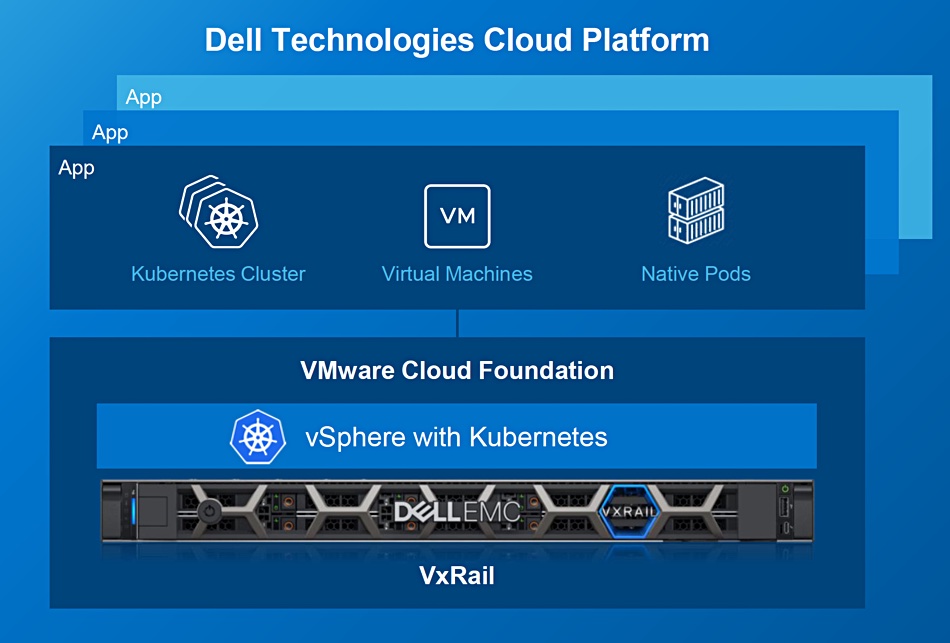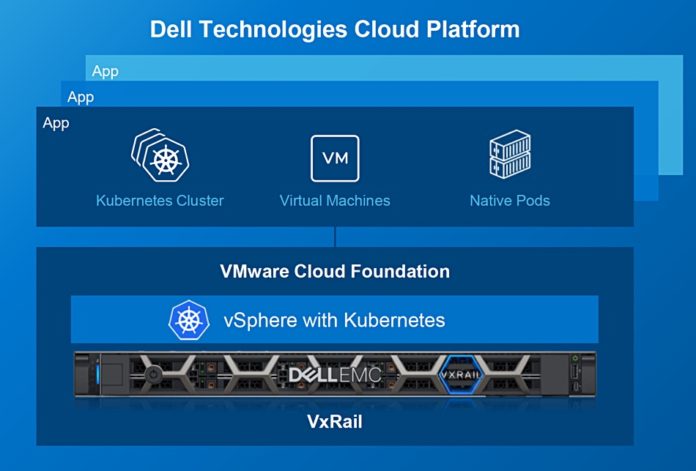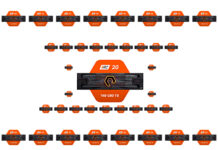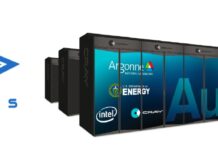Dell has extended its VxRail hyperconverged infrastructure systems with support for AMD EPYC processors, PCIe Gen 4.0, Kubernetes, Optane, more GPUs and ruggedised deployments, making it more relevant to the edge.
The ruggedised systems form a new VxRail product type: The EPYC-using VxRail is a new specific E Series configuration, and the other additions apply to VxRail systems generally
Tom Burns, SVP and GM for Integrated Products & Solutions at Dell, said in a canned statement: “With the new ruggedized VxRail systems, location and conditions don’t matter.” He’s not kidding.
There are five existing VxRail product flavours;
- E Series – 1U/1Node with an all-NVMe option and T4 GPUs for use cases including artificial intelligence and machine learning
- P Series – Performance-intensive 2U/1Node platform with an all NVMe option, configurable with 1, 2 or 4 sockets optimised for intensive workloads such as databases
- V Series – VDI-optimised 2U/1Node platform with GPU hardware for graphics-intensive desktops and workloads
- S Series – Storage dense 2U/1Node platform for applications such as virtualised SharePoint, Exchange, big data, analytics and video surveillance
- G Series – Compute dense 2U/4Node platforms for general purpose workloads.
Get rugged
The ruggedised VxRail boxes are a sixth variant: the D Series comes in a 1U short depth – 20-inch – box that can operate at an altitude of up to 15,000 feet [1.4miles], sustain a 40G operational shock (all-flash model] and operate within a temperature envelope of 5 to 131 degrees Fahrenheit [-15° Celsius to 55° Celsius], withstanding the extremes for up to eight hours. They also resist sand and dust ingress, claimed Dell.
VxRail D Series systems come in all-flash [SAS SSD] and hybrid SDD/disk versions, and can be used outside data centres in industrial and external environments within the limits above – it can be harsh at the edge.
EPYC, Optane DIMM, Quadro GPUs and LCM
The E Series E665 system supports AMD EPYC processors, a first for VxRail, with up to 64 cores, and also PCIe Gen 4.0, making them powerhouses and suitable, Dell sugested, for workloads with stringent performance needs, such as databases, unstructured data, VDI and HPC. Blocks & Files expects PCIe Gen 4 support to spread across the VxRail range in the next few quarters.
VxRail systems now support Optane Persistent Memory DIMMs, as well as Optane SSDs, and can deliver a claimed 90 per cent drop in latency and a sixfold IOPS increase, Dell said.
Dell said this was tested using an OLTP 4k workload on 4 x VxRail P570F systems with Optane persistent memory in app-direct mode versus a VxRail all-NVMe flash system. No actual numbers were revealed. The available data suggests Optane DIMM-enhanced VxRail systems are good for in-memory databases and other workloads needing low latencies.
The VxRail systems also support Nvidia Quadro RTX GPUs and vCPUs to accelerate rendering, AI, and graphics workloads.
Dell has announced Lifecycle Management (LCM) software for VxRail which can streamline updates by running pre-upgrade health checks on demand. It produces continually-validated VxRail system states to reduce downtime, with non-disruptive upgrades.
DTCP and Kubernetes
The Dell Technologies Cloud Platform (DTCP) on VxRail supports Kubernetes clusters, with VMware Cloud Foundation (VCF) v4.o and VxRail 7.0. VCF can operate with a Consolidated Design architecture, in which compute workloads are co-resident with management workloads in the management domain. This is said to be good for general-purpose, virtualised workloads.

Alternatively it can have a Standard Design architecture with independent management and workload domains. This enables it to run multiple traditional and cloud native workloads, such as Horizon VDI and vSphere with Kubernetes.
It should be possible to upgrade from Consolidated Design to Standard Design in a future release of VxRail software.
DTCP starts at the 4-node level. The VxRail HCI System Software latest update, Nvidia Quadro RTX GPUs and Optane DC Persistent Memory options are available globally now. VxRail D Series and the E Series with EPYC processors will be available globally on June 23 this year
Comment
Dell VxRail HCI is a stronger offering with these additions. The Optane DIMM, PCIe 4.0 and new GPU support make it a low-latency, IOPS-munching machine suitable for compute and graphics-intense workloads. Enterprise data centre admins should appreciate the smoother and more certain update routines with the LCM software.
Both Dell and it’s channel’s sales force should also appreciate the ability to sell HCI systems with VMware and VxRail (HW + SW) working together in a neat package.








